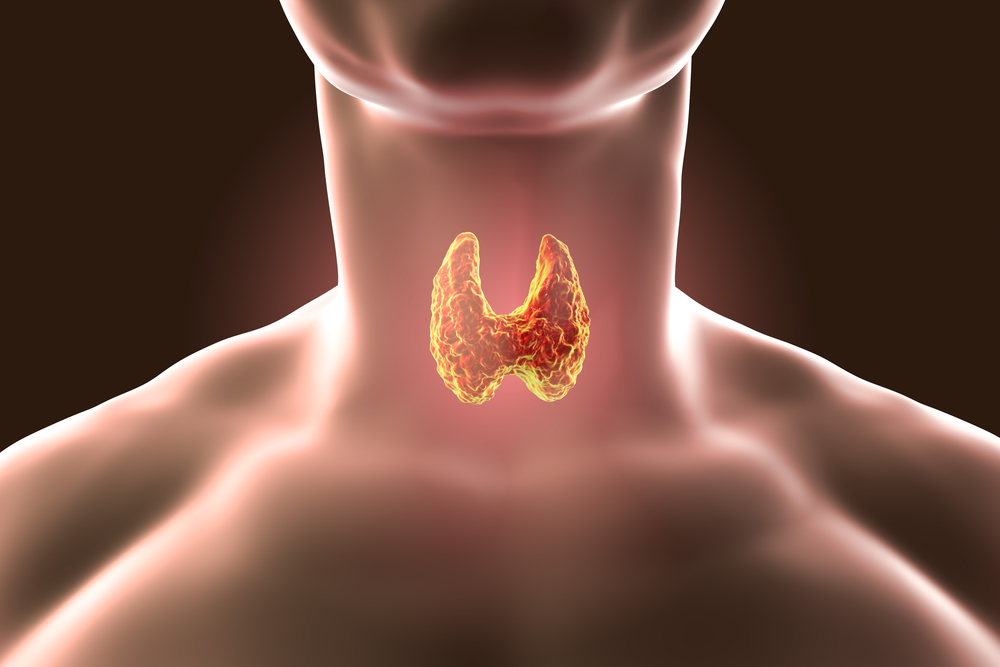Inhaled Thyroid Hormone May Work to Reverse Lung Fibrosis in IPF, Mouse Study Suggests

Thyroid hormone, delivered through aerosol inhalation, helped to resolve lung scarring in a mouse model of idiopathic pulmonary fibrosis (IPF), according to research published in the journal Nature Medicine.
The study provides evidence that lung fibrosis is a disease caused — at least partly — by abnormalities in metabolic processes in the lungs.
The research team argues that inhaled thyroid hormone treatment should be further explored as a potential IPF therapy, although it underscored that work remains before the findings might be translated into a treatment.
“Our data support further study of the potential role of aerosolized thyroid hormone as a therapy for fibrosis,” Naftali Kaminski, MD, the study’s senior author, professor of medicine and chief of the Section of Pulmonary, Critical Care, and Sleep Medicine at Yale School of Medicine, said in a press release.
The study, “Thyroid hormone inhibits lung fibrosis in mice by improving epithelial mitochondrial function,” sprang from the finding that patients with IPF have increased activity of an enzyme activating thyroid hormone in the lungs.
Among all genes in the lungs of IPF patients, the one that produces an enzyme guarding thyroid activation — called iodothyronine deiodinase 2 (DIO2) — stuck out by deviating most from what is normal.
Researchers wondered if this unusually high activity indicated that the body was trying to counteract metabolic changes in stressed lung surface cells. The finding also suggested that further boosting the levels of thyroid hormone in the lungs may normalize some of the metabolic abnormalities seen.
Mice lacking the enzyme DIO2 also developed worse lung fibrosis when exposed to fibrotic triggers.
To examine how thyroid hormone impacts the disease, the team exposed two different mouse models of IPF to either inhaled or systemic thyroid hormone.
While both forms of the treatment lessened the severity of fibrosis in the animals — even when it was delivered after fibrosis had been established — systemic exposure made mice develop hyperthyroidism.
“Giving the hormone systemically causes signs of hyperthyroidism,” said Kaminski. “But when we delivered the hormone by aerosol, it was not increased in the blood; yet it enhanced the resolution of fibrosis, so the animals treated had significantly less fibrosis than controls despite the fact that they were treated during the established phase of fibrosis.”
The team also tested human lung epithelial cells — those lining the airways — noting the same effect.
Examining the lung cells more closely helped to explain how the hormone was acting to harness disease processes. Many researchers have noted that in IPF lungs, energy-producing structures called mitochondria are not normal. Since mitochondria that work well are required for cells to stay healthy, these abnormalities likely contribute to disease.
When researchers exposed fibrotic lung cells to thyroid hormone, they noted that the mitochondria started looking and acting more normal. The treatment also lowered the rate of cell death caused by mitochondrial failure.
Findings indicate that when thyroid hormone is added, it normalizes the mitochondrial metabolic abnormalities, in turn protecting lung cells and allowing them to reverse fibrotic processes.
While the study provides robust proof that inhaled thyroid hormone may benefit IPF patients, the team underscored that additional studies are needed before the approach can be used to treat patients.







